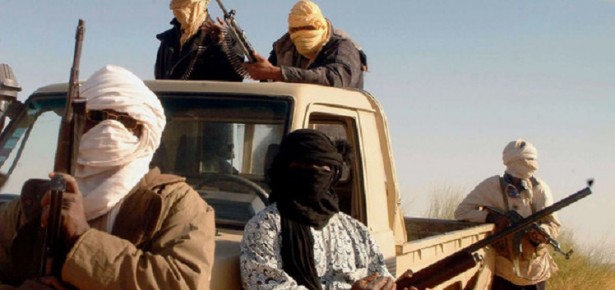
In mid-January 2013, a coalition of diverse jihadi groups seized control of the In Amenas gas field in Eastern Algeria, close to the Libyan border. The field provides 5 percent of the gas produced in Algeria. The attack, blessed by al-Qaeda in the Mahgreb (AQIM), a powerful al-Qaeda affiliate, revealed the power of the radical Islamists to take control of a large and economically important site with more than eight hundred employees. The attack is believed to have been planned by Mokhtar Belmokhtar, who started a splinter group from AQIM not long before the attack.
Operating under a policy that prohibited negotiation with terrorists, the Algerian state launched a military siege against the gas facility that resulted in high numbers of casualties. More than thirty attackers died, and at least three dozen hostages from eight countries also perished. The well-armed assailants had terrorized the hostages before their rescue or death.
Globalization has created a world in which money, arms, and people move readily across borders
These are the simple facts of the case. Yet this single act of terrorism epitomizes the main principles of this book, that the interaction of crime, corruption, and terrorism is having a tremendous impact on both security and the global economy. This attack – designed to command international attention – was characteristic of contemporary security threats, where the challenge comes from nonstate actors rather than governments. This attack was a strike at the core of the Algerian economy yet caused numerous foreign casualties. It reveals the consequences of globalization, where foreign investment and workers from diverse countries are placed in ever more remote locales and unstable regions, especially as the world seeks to tap ever more distant sources of oil and gas. Carried out in a lightly guarded desert locale, it reveals the strategic thinking of the terrorists. They were willing to carry out what was almost certainly a suicide mission to advance their goals by attacking an oil facility employing citizens from many different countries. Yet they did this with advanced weaponry that they had acquired and knew how to deploy.
The January attack of 2013 is reflective of a “new terrorism,” discussed more in Chapter 3, that is more spectacular in its operation and its victimization, but also in its global economic effects. The hostages killed came from at least three continents – North America, Europe, and Asia. American, British, French, Japanese, Norwegian, Filipino, and Romanian victims were identified. The attackers reportedly came from at least seven countries, including Algeria, Chad, Egypt, Mali, Mauritania, Niger, and Canada. They entered from Libya, which presently lacks adequate border controls. The presence of two Canadians reveals the capacity of Islamic militant organizations to recruit not only regionally but also globally. The target was even more global than was revealed by the nationalities of the terrorists and their victims. The In Amenas gas field was operated by companies based on four continents, including BP, Statoil of Norway, and Sonatrach (the Algerian national oil company), and was serviced by many international firms. The Japanese engineering firm JGC Corp helped service the field, which explains why the Japanese, despite being far from their home country, suffered the largest number of fatalities.
Globalization has created a world where international businesses from diverse countries, employing citizens from around the globe, can combine in such a remote locale as In Amenas. But globalization has also created a world in which money, arms, and people move readily across borders, making such sites vulnerable. This operation required extensive advanced planning and logistics to move significant numbers of people and arms long distances across borders to this desert site.
Recent decades have seen a decline of borders, as there have been greater efforts to promote trade and move massive amounts of goods. The decline of the border in the In Amenas case was a consequence of the absence of state function in In Amenas after the Arab Spring and the ousting of Qaddafi. In many other cases, the decline of borders is a result of the retreat of the state, in which less control has been exercised over national territory. In the developing world, these borders are often artifacts of colonial rule and other historical legacies rather than defensible geographic divisions of people and cultures. Postcolonial Africa epitomizes this problem, as many of the borders of African states are artificial constructs of the colonial era. With little national desire to police these boundaries, and few financial incentives for law enforcement to perform their jobs effectively, significant corruption prevails at the frontiers. Consequently, without law enforcement capacity to police movements of people, the radical Islamists were able to enter into Algeria, allegedly from Libya, without problems. Many of the arms used came from Qaddafi-era Libya, but they could be moved to diverse locales in Africa, largely unimpeded, because of the absence of effective controls in the chaos that followed the Arab Spring.
Assisting in the movement of people and the smuggling of goods are the Tuaregs, a tribal people who have traditionally moved cargo across the desert. Having fought for Qaddafi, many escaped from Libya. With their displacement after the Arab Spring, they forged an alliance with AQIM that exploited their talents in transporting and smuggling goods, arms, and people across the desert and avoiding border controls. They have helped AQIM take control of northern Mali.
The Tuaregs are just one element of the extensive network that facilitated this attack. Although Belmokhtar claimed credit for the assault on In Amenas, in reality, the group that assaulted the gas field united a heterogeneous group behind a shared objective. Those who participated and facilitated the assault included jihadists, ethnic rebels, and diverse criminal groups. This network construction is representative of the new face of terrorism that combines criminal and terrorist elements with unclear and often hybrid identities in spaces where they can operate together.
To read the full excerpt, click here.
Latest Comments
Have your say!